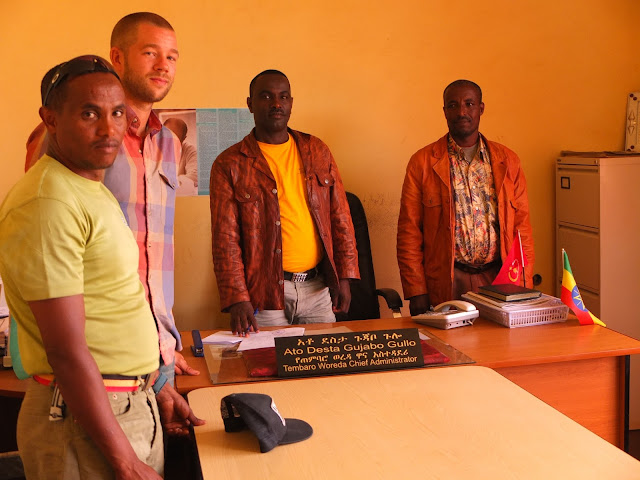My sister will help in providing the third installment of the trip to Mudula.
Following our HPL program we double backed towards Kololo. There a group of local bee keepers awaited our arrivial. Sallmnesh and Temesgin worked hard to put out the good word at the previous weeks market, and the ER Kololo students made sure that everyone within a few miles knew. Kahlyn yould be providing a foundational lecture on improving upon traditional ethiopian beekeeping, and following that would be hosting a Q and A. We had a wonderful turn out and the turnour went as well as one could have wished. The community of bee keepers was very thankful for Kahlyns insight, while Kahlyn left with a great deral of valuable information. The following is an excerpt from her blog. Its Awesome stuff.
So we’ve been back in Addis since Tuesday, and I can’t help but do circles in my mind about thefuture possibilities of collaborating with beekeepers in the Kembata-Tembaro region of Southern Ethiopia this coming fall.
Our week spent in the south not only introduced me to the communities of people collaborating in the construction of schools led by my brother Cien, but introduced me to the existing infrastructure of beekeeping in the area. Though I only have 2 years of beekeeping experience behind me, my university education as well as time spent studying and experiencing successful community development programs join together to provide me with the confidence in knowing that I am on the right track.
Part of our last day in the south was spent traveling to the small hillside village of Kololo. My brother spent almost 8 months in the village from 2011- 2012 constructing a hillside K-3 school, so we took some time to visit the area, check on the progress of the newly installed school programs, as well as meet with area beekeepers. Due to its hillside location, as well as proximity to spring water, the areas vegetation is even denser than that of Azedabo.
The family of Salamesh, one of my brother’s school construction team members, took it upon themselves to help organize a meeting between myself and area beekeepers for a basic information session. As many of my readers know, my focus for making this trip to Ethiopia has been to gather the necessary information to bring a pilot program focused on enhancing the culture of beekeeping to better favor the health of the honeybee and consequentially the people as well as the communities that keep them. In simpler terms I am working at finding a way of continuing our exchange of beekeeping knowledge to better celebrate the richness the trade offers.
Though similar in some regards to the beekeeping meeting held in Azedabo three days earlier, the turnout of beekeepers in Kololo was much greater as well as more diverse. To my satisfaction, women do in fact bee keep in the village, and are looked at as equals to the men. Old as well as young were present, and all were eager to hear what I had to share. From one translator to the next, I introduced myself and my beekeeping background and immediately began to pass around my protective beekeeping gear.
I shared with them my experience of harvesting honey the previous day, and stated how the trade could become so much more comfortable with very small changes. Had I not had a similar response during the previous meeting I would have been surprised, as the majority of beekeepers practice the trade as passed down from their elders and really have no idea of the logistical side of things. Basic concepts of protective gear, hygiene, as well as bee nutrition are non-existant. After drawing up and explaining a bit of the benefits of transitional top bar style bee hives as well as modern closed panel style hives, I could tell through their inquisitive stares as well as further questions that basic concepts were being understood. An elderly man even spoke out and thanked me for calling him a beekeeper, though the money he earned to send his children to school was made by the sale of his honey, no one had ever recognized him as such.
We finished the meeting by asking the beekeepers of their interest of transitioning to transitional and or modern hives and received a unanimous response. Though they repeatedly thanked me for taking the time to educate them in the most formal class on beekeeping they had ever received, I am certain I took away more from the encounter than they did. So with just over 2 weeks left on Ethiopia I continue to work towards gathering all the necessary information to make my return this coming fall possible.
Make sure to give Kahlyns website a visit at http://beefreeapiaries.org
 |
| Checking out the gear |
 |
| A few of the local kids were pretty curious |
 |
| Talking through explanations of changes bee keepers can make to their traditional hives |
 |
| Enjoying the view |
 |
| My old shower |
 |
| Making lumber from tree trunks |
 |
| Beers after a long day on the road |






















































